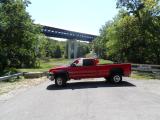- Replies 90
- Views 11.4k
- Created
- Last Reply
Top Posters In This Topic
-
 hex0rz 15 posts
hex0rz 15 posts -
 Mopar1973Man 12 posts
Mopar1973Man 12 posts -
 rancherman 11 posts
rancherman 11 posts -
 diesel4life 10 posts
diesel4life 10 posts


Last night, was driving around doing errands and suddenly a voice told me look at your fuel pressure. Pressure was at 12psi and kept an eye on it. Would stay steady at this pressure driving around but was ready to shut her down If needed. Guess the filter replacement didn't Fox my problem.
Got home waited to clear the ecu and bump stated it. Pump sounded like it was dying!
Guess I'm going to be calling airdog in the morning for a replacement! Shoot, first one went 9 months, this time almost 3 years...